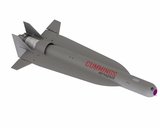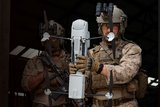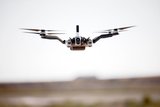What's next for the Pentagon after the Replicator programme?
Although the Replicator initiative has made several accomplishments, there are still multiple gaps to plug across the US Department of Defense (DoD) and its services.
As part of a Boeing-funded programme, engineering students from the University of Bristol are working on developing an electric-powered unmanned airborne system (UAS) to monitor the activity of a volcano in Latin America, the university announced on 14 September.
The UAS will collect ash samples and atmospheric data from the Fuego volcano in Guatemala during an expedition in February. The aim of the project is to analyse volcanic activity to enhance ash cloud modelling for aviation purposes.
Developing the electrically powered UAS will need a new design approach. The UAS needs to be able to provide live video feed up close from the volcano, maintain a flight time of about an hour and collect ash samples from the volcano plume for later analysis by volcanologists.
The students working on the project said that the scope and purpose of the project is not limited to volcano monitoring. Core technical challenges are being overcome to provide a platform that can be developed for different environmental monitoring purposes.
Student Mohammad Rweished said: 'The Boeing project offers an opportunity to explore the application of UAS in new markets and in aiding in everyday tasks. The project poses high demands on reliable, safe communication links that can be used in other applications and industries. Maximising flight times using renewable and cleaner technology makes sustainability and efficiency core of the project.'
The University and Boeing envisage the project to be an annual activity that combines aspects of aerospace engineering, such as UAS design and control and operation in a controlled space, with aspects of electrical and electronic engineering, such as communications, observation and sensing. The project is consistent with both Bristol's and Boeing’s research interests in systems integration.

Although the Replicator initiative has made several accomplishments, there are still multiple gaps to plug across the US Department of Defense (DoD) and its services.

Cummings Aerospace presented its turbojet-powered Hellhound loitering munition at SOF Week 2025, offering a man-portable solution aligned with the US Army’s LASSO requirements.

PDW has revealed its Attritable Multirotor First Person View drone at SOF Week 2025, offering special operations forces a low-cost, rapidly deployable platform for strike and ISR missions, inspired by battlefield lessons from Ukraine.

Teledyne FLIR is highlighting the emerging requirements for 'recoverable and re-usable' loitering munitions across the contemporary operating environment during this week’s SOF Week conference in Tampa, Florida.

High-performance maritime industry player Kraken Technology Group, based in the UK, has used the SOF Week conference in Tampa, Florida this week to debut its K3 Scout uncrewed surface vessel (USV) to the North American market.

Red Cat and Palladyne AI recently conducted a cross-platform collaborative flight involving three diverse heterogeneous drones.